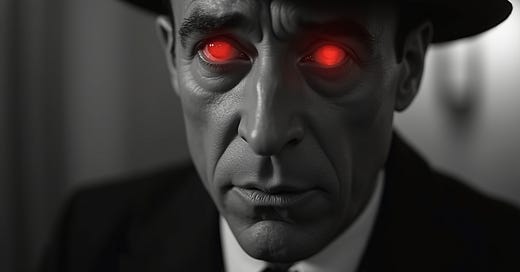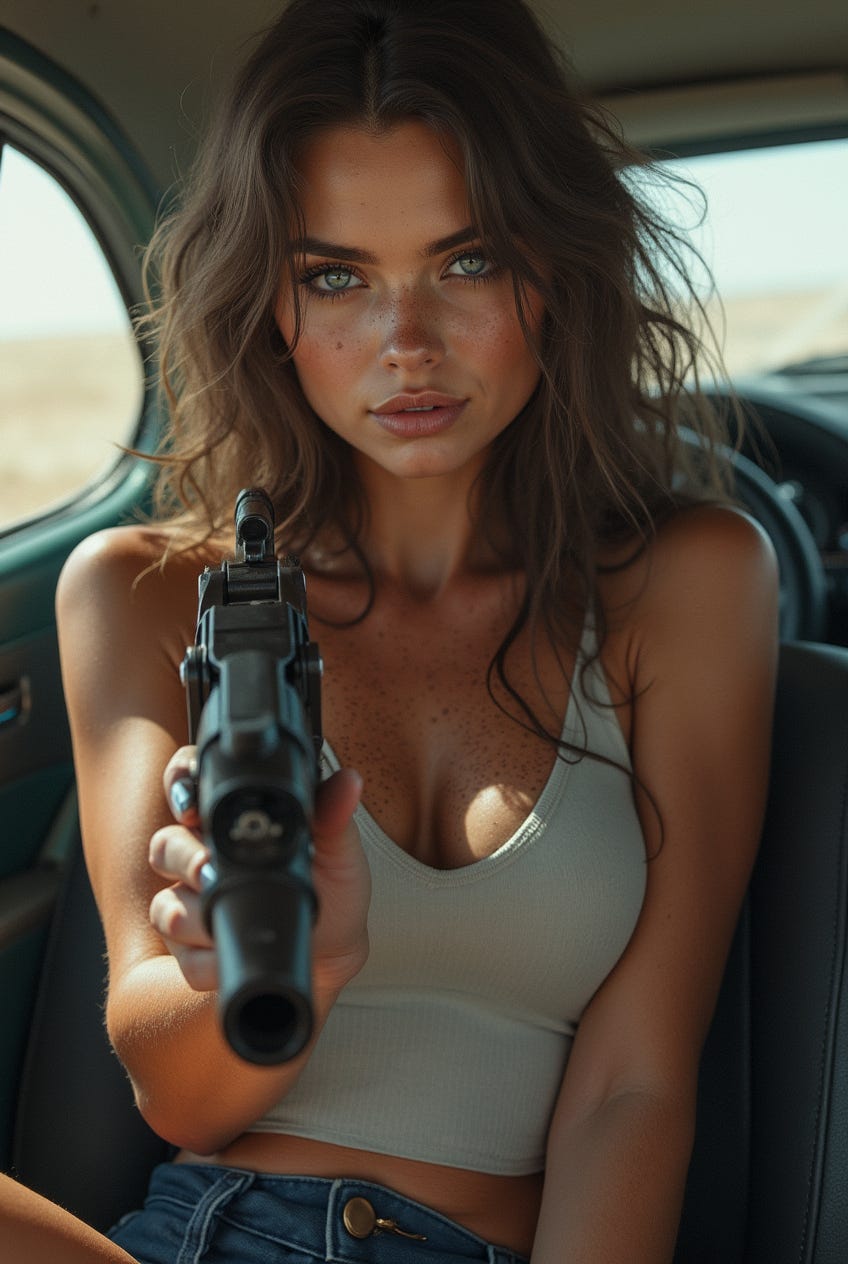I went to the AI on the Lot event last week in Los Angeles. This AI film conference brings together “filmmakers, innovators, artists, media execs, startups, and developers” and featured panels and workshops led by the amazing folks at Machine Cinema. We’ve been connecting with the Los Angeles AI film community for awhile, watching what is happening there in this space.
A few thoughts on the 2025 landscape:
Ecosystem Startups: Some people there are interested in building infrastructure around dynamics emerging from AI and film. These are platforms/communities/services/technologies that address things like rights management and artist compensation, like Credtent, whose technology aims to compensate artists when their work is used for AI training. Way fewer of these than you’d expect.
Education-oriented Communities: Entities like Curious Refuge and Machine Cinema are a key part of this community. Curious Refuge runs courses teaching Generative AI tools and Machine Cinema holds “GenJams” to build community around Generative AI tools. Super smart play to join Promise Studios.
Models (not that kind): Generative AI platforms like Moonvalley, HeyGen, Luma Labs, are there looking to build community around their models and yes the tools are next level. If approached thoughtfully, these platforms could have a major impact on creative community development. I see parallels with the role Trilitech and Tezos have played in Web3, where forming artist communities has been central to their strategy — like becoming the official blockchain partner of Art Basel. While programs like Runway’s Creator Program are promising, there’s still a big opportunity here: generative AI companies could be leading not just on tech, but in how communities are cultivated around it.
GenAI Filmmakers: the bulk of this community is small teams or individuals who are using generative AI to produce cinematic moving image works notable for imagery and scenarios that would have been impossible without Hollywood-scale budgets only a short time ago.
Many of these practitioners come from creative technical film industry backgrounds like motion graphics, FX, CGI, editing. Mostly, these guys pivoted to AI during the strikes and are relishing their ability to bring their own creative visions to life for the first time. They are distributing their work through competitions like Project Odyssey, the Culver Cup, and YouTube.
Some of these people are banding together to become studios, creative agencies, or talent management agencies. Here we have things like Promise Studios ( mentioned above vis a vis Curious Refuge), with a killer team who is aiming to create new AI-driven IP and are working on proprietary software that will underpin the growth of the company as a new kind of studio, Massive, an agency that does everything from model training to storyboarding for everyone from television to brands, or Secret Level, which represents a number of filmmakers, and who just released an incredible video with Wu-Tang Clan.
Make no mistake, it’s still Hollywood
But the vast majority of work that I’m seeing from this community is exactly what you would expect: powerful, world-changing creative tools being used to reproduce familiar tropes.
Because Hollywood loves explosions, and AI can make them, everything explodes. Things in these worlds are wet from sweat or otherworldly goo, or as melon-dry as a felted puppet face. Things blow and billow, smoke, hair, robes.
Trained on a cultural archive saturated with (among other things) action films, not only are the models returning what they know (slow-motion chaos, cinematic lighting, photorealistic women with artful freckles holding guns and driving tanks) but many times the filmmakers are defaulting to what they know. (Or know of? Through cinema? Don’t get me started )
You will see many ladies like these
Some examples: Extreme close-ups of sweaty men taking a moment to consider the world before taking explosive action; superheroes recognizable in everything but name or outfit; dystopic cityscapes populated by robotic soldiers and their shapely counterparts; screaming car chases; cute yarns featuring Pixar-informed ensemble casts; a classic six-pack from the warehouse of glowing eyes - (anime girl, avatar-style forest girl, teen girl in dystopia, zombie, fashion laser dude, cyborg soldier); lithe young women coming alive across threaded multiverses lit by tendrils that reconnect them to ancestors or heritage; the pantheon of aerial shots of wilderness and space colonies finally let loose from the private dreamscapes of men from IATSE.
Don’t get me wrong. The quality of this work technically is incredible. But there’s a showreel vibe. Everyone is focusing on showing what they can do. But then we have the business model question - show who?
Aside from a feeling that there are unaddressed contours to the paradigm of whatever this industry now is, and the slightly guilty vibe in those rooms where practitioners are trying to stand up as AI leaders while also separating themselves defensively from the coming impacts of industry disruption by emphasizing the importance of clean training data, the main disappointment is about narrowing - or at least not expanding - possibility. These tools could be used to imagine radically different futures, new forms of form forms. But instead we are getting a hyperreal residue of Hollywood. The tools are maturing but the collective imagination is still a tiny baby dreaming of one day mastering pattern replication.
I mean, I know I’m always the one advocating for outlandish futures that no one can envision or pronounce (yet!), and that it shouldn’t really be a surprise that aesthetic or conceptual experimentation at an event like AI on the Lot was never the name of the game.
This has been inserted here as an example of what the name of the game was not
But I left with questions I wished there had been more space to explore:
Can/should/will AI film move beyond Hollywood’s visual grammar? Will AI storytelling always default to pre-existing tropes because that’s what creators (and audiences?) reflexively reach for?
Is the identity of the “filmmaker” changing, or is it the identity of the film: To what and why? Some now call themselves Directors in a doubling down of the old paradigm, distinguishing themselves I guess from solo AI filmmakers who aren’t managing teams of GenAI artists who make the imagery. Another shift - the motion FX people have always worked across ads and movies, so we see Gen AI filmmakers from those backgrounds doing the same. Are these filmmakers? Are these films?
Related, How will commercial factors shape the direction of AI film — art, ads, art ads, ad art? Agencies, branded content, and advertiser-aligned studios seem to be the only legible commercial play right now.
What does meaningful innovation look like in something arising from showreel aesthetics? How can the field grow toward new narrative forms or aesthetic experimentation? Is this Hollywood’s job to do or should I book Basel? With creators reproducing what feels “cinematic,” how can the field open up to truly strange visions? Asking for a friend.
How do we develop a critical language for AI film that isn't just technical or cinematic? Right now, discourse centres on render quality and issues like character continuity, even as everyone keeps saying that the future of the medium depends on ideas. What would it look like to evaluate AI films on terms that reflect their ontological weirdness or procedural origins?
What will AI filmmaking do to Hollywood? Are we really witnessing a decentralization of creative control? Or are solo creators subconsciously rebuilding old studio logics? What is the difference? Who will pay, how, why?






